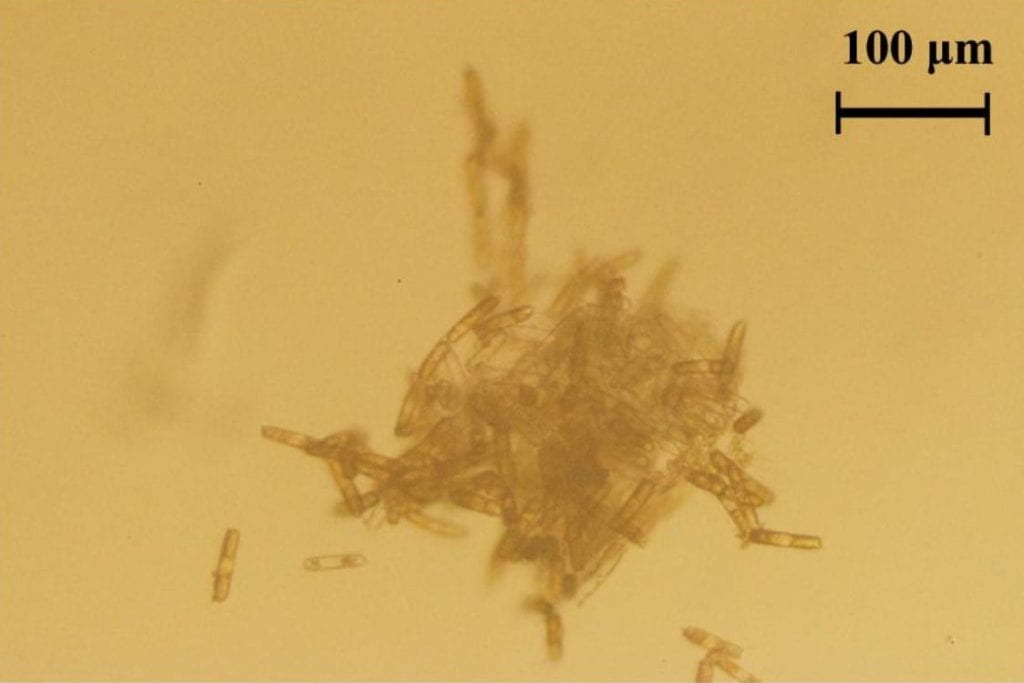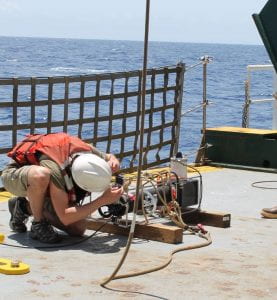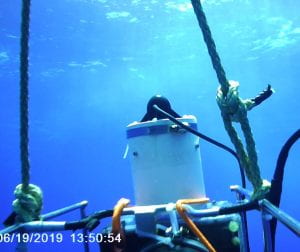
Particulate matter in the ocean naturally aggregates together and breaks apart due to hydrodynamic forces. Aggregates are clumps of individual particles that have distinct physical properties (the example shown above is an aggregate of phytoplankton cells). In particular, the settling velocity of an aggregate is governed primarily by its size. Very small aggregates in the ocean can settle with velocities of fractions of a meter per day, whereas large aggregates can settle at rates of hundreds of meters per day or more. Sedimentation velocity is ultimately what determines the rate at which material is exported from the surface ocean. Because of its strong dependence on size, we need to understand the factors governing the size distribution of these natural aggregates in order to predict their transport in the oceanic environment.
We are working to determine what governs the strength of marine aggregates and understand how they physically disaggregate in the ocean. To do this, we are studying both lab-grown marine aggregates and conducting field measurements to quantify breakup strength. The ultimate goal of this research, which is being conducted in collaboration with Dr. Adrian Burd (University of Georgia) is to capture this breakup behavior in disaggregation models for implementation in ocean biogeochemical transport predictions.
Above is an example of a breakup event of an aggregate in laminar shear created in our lab and captured using a high speed camera. This shear event resulted in complete disruption of the initially-large aggregate and a redistribution to very small sub-aggregates. We are currently working to expand our results to include many aggregates with a wide range in size, shape, and materials.
To ensure relevance of our laboratory findings to actual marine aggregates, we will be taking our strength measurements to sea in Spring 2022. Using deployable particle sizing instrumentation and custom-made attachments to expose ambient particles to turbulence, we will sample the strength of phytoplankton aggregates in the Gulf of Maine. Below are pictures of preliminary deployments of our instrumentation (left: on deck of an R/V; Right: at a depth of 10 m), which is currently being redesigned for deployment in 2022.


This work is funded by the National Science Foundation (OCE-1948283).
